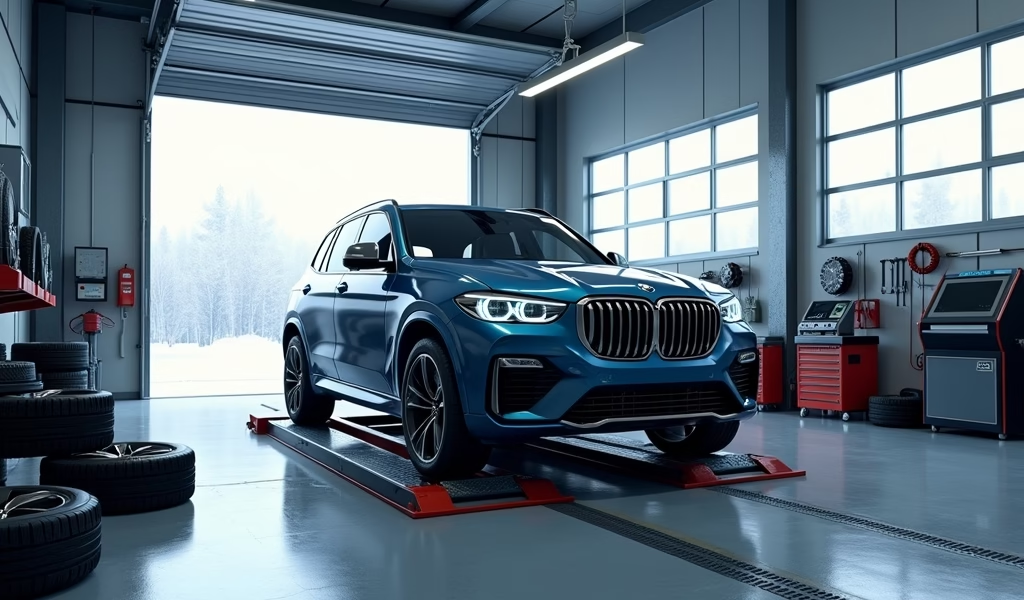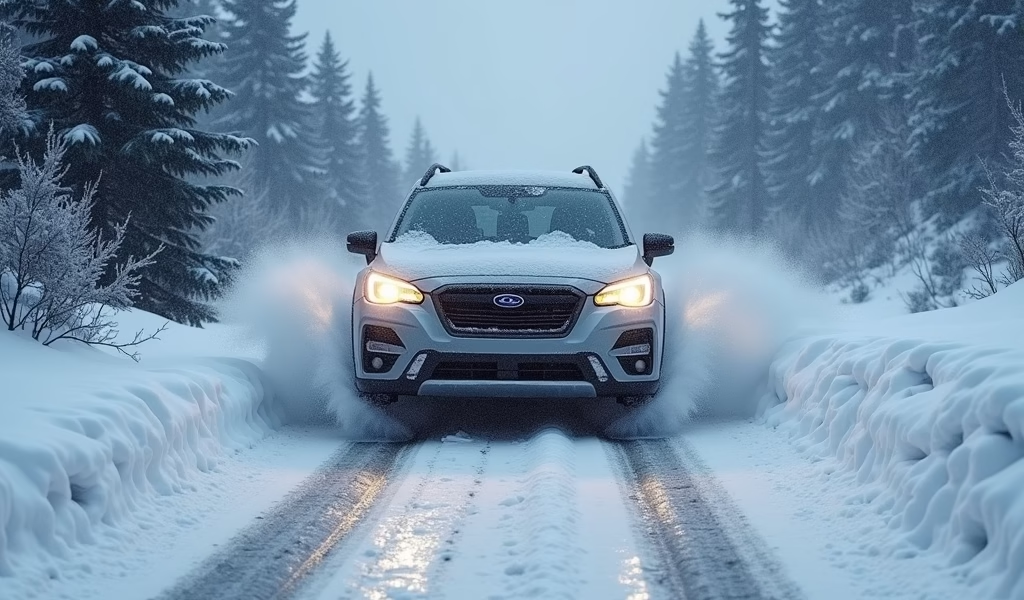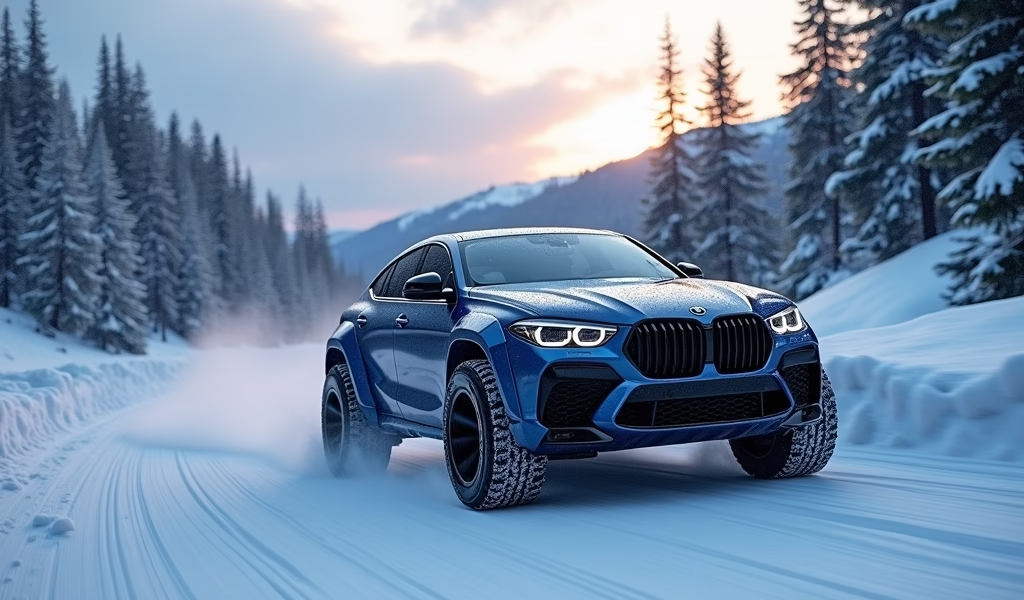Overview
The article provides five essential tips for maximizing SUV performance in winter conditions: selecting proper winter tires, maintaining fluids for cold weather, ensuring battery and electrical system readiness, building a winter emergency kit, and following a preventative maintenance schedule. SUVs excel in snowy conditions due to their elevated ground clearance, AWD/4WD capabilities, balanced weight distribution, and better visibility, but require specific preparation to perform at their best during winter.
Table of Contents
- What Makes an SUV Great for Snow Driving
- Tip #1: Proper Winter Tire Selection and Maintenance
- Tip #2: Essential Fluid Maintenance for Cold Weather
- Tip #3: Battery Care and Electrical System Preparation
- Tip #4: Building Your Winter Emergency Kit
- Tip #5: Winter Preventative Maintenance Schedule
- Conclusion
- Frequently Asked Questions
What Makes an SUV Great for Snow Driving
When winter transforms your daily commute into an arctic expedition, having the right vehicle becomes essential. As a mechanic who’s rescued countless stranded motorists during blizzards, I can tell you that SUVs excel in snowy conditions for very specific reasons.
The elevated ground clearance of SUVs gives them a significant advantage when the snow piles up. While sedans might beach themselves on just 6 inches of snow, many SUVs can confidently plow through deeper accumulations without scraping their undercarriage.
Most SUVs come equipped with all-wheel drive (AWD) or four-wheel drive (4WD) systems that distribute power to all four wheels. This dramatically improves traction on slippery surfaces compared to front-wheel or rear-wheel drive vehicles. When one wheel starts to slip on ice, these systems can redirect power to wheels with better grip, keeping you moving forward.
The weight distribution in modern AWD SUVs also contributes to their winter prowess. With engines typically positioned over the drive wheels and a well-balanced chassis design, they maintain stability in conditions that would send lighter vehicles sliding.
Higher seating positions in SUVs improve visibility during snowstorms, allowing drivers to spot obstacles and changing road conditions more easily. When visibility drops and road markings disappear under snow, this elevated perspective becomes invaluable.
According to research from the Insurance Institute for Highway Safety, modern SUVs with advanced lighting systems also provide better illumination on dark winter roads, reducing accident rates by up to 20% compared to vehicles with lower-rated headlights.

Tip #1: Proper Winter Tire Selection and Maintenance
Even the best SUV for snow performance is only as good as the four patches of rubber connecting it to the road. I’ve seen $60,000 AWD luxury SUVs stranded in snow while more humble vehicles on proper winter tires drive right past them.
Winter tires are fundamentally different from all-season or summer tires. They use specialized rubber compounds that stay flexible at freezing temperatures when other tires harden like hockey pucks. This flexibility is crucial for maintaining grip on icy surfaces.
The tread patterns on winter tires are engineered with deeper grooves and unique “sipes” (tiny slits in the rubber) that provide hundreds of additional biting edges. These edges grip snow and ice like tiny claws, dramatically improving traction when accelerating, braking, and cornering.
When selecting winter tires for your SUV, look for options with the Three-Peak Mountain Snowflake symbol on the sidewall. This certification indicates the tire meets specific performance requirements in snow testing and offers significantly better traction than tires with just the M+S (Mud and Snow) designation.
Tire pressure fluctuates with temperature changes—dropping approximately 1 PSI for every 10°F decrease. Check your pressure monthly during winter, ideally when the tires are cold. Underinflated tires compromise handling and increase fuel consumption, while overinflated tires reduce your contact patch on the road.
Consider these maintenance practices to maximize winter tire performance:
- Rotate your tires every 5,000-6,000 miles to ensure even wear
- Check tread depth regularly—winter tires should have at least 6/32″ of tread (more than the legal minimum) for effective snow traction
- Inspect for damage after hitting potholes, which are more common during freeze-thaw cycles
- Store off-season tires properly—flat in a cool, dry place away from direct sunlight and ozone sources
If budget constraints prevent you from buying a full set of winter tires, focus on your drive wheels first. However, using different tire types can affect handling predictability, so a matching set is strongly recommended for optimal safety.
Tip #2: Essential Fluid Maintenance for Cold Weather
When temperatures plummet, your SUV’s fluids face challenges that can compromise performance or even cause damage. Proper fluid maintenance before and during winter is like preventative medicine—a small investment that prevents costly repairs.
Engine oil thickens significantly in cold weather, making it harder for your engine to turn over during starting. Switch to a winter-grade synthetic oil with a lower first number in the viscosity rating (like 0W-20 instead of 5W-20). Synthetic oils flow better at low temperatures, reducing wear during those critical cold starts.
Your cooling system needs special attention before winter arrives. The antifreeze-to-water ratio should typically be 50:50 to prevent freezing in most climates. For extreme cold regions, a 60:40 antifreeze-to-water ratio might be necessary. Have your coolant tested with a refractometer to ensure it provides protection down to the lowest temperatures your region experiences.
Windshield washer fluid is often overlooked until you’re driving behind a salt truck with a dirty windshield. Standard summer washer fluid freezes at around 32°F, potentially damaging your reservoir and lines. Winter-formulated washer fluid contains higher concentrations of methanol or ethanol to prevent freezing down to -20°F or lower. Keep your reservoir topped up throughout winter.
Brake fluid absorbs moisture over time, which can lead to decreased braking performance and potential freezing in extreme cold. If your brake fluid hasn’t been changed within the last two years, consider having it flushed before winter. Moisture-contaminated brake fluid has a higher freezing point and promotes internal corrosion in your braking system.
Transmission fluid and power steering fluid also become more viscous in cold weather. While these typically don’t require seasonal changes, having their condition checked before winter can identify potential issues before they leave you stranded in freezing conditions.
According to AAA research, proper fluid maintenance can prevent up to 40% of winter breakdowns, making it one of the most cost-effective ways to prepare your SUV for snow season.
Tip #3: Battery Care and Electrical System Preparation
I can’t count how many service calls I’ve responded to on frigid mornings for SUVs that won’t start. Battery failures are the leading cause of winter breakdowns, and they almost always occur at the worst possible time—like when you’re late for work on the coldest day of the year.
Cold weather creates a perfect storm for battery failure. A battery that performs flawlessly in summer can suddenly leave you stranded when temperatures drop. At 0°F, a battery delivers only about 50% of its rated capacity, while your engine requires up to 60% more power to start than it does at 80°F.
Have your battery professionally tested before winter sets in. Most auto parts stores offer this service for free. If your battery is more than three years old or shows signs of weakness during testing, replace it proactively. The cost of a new battery is minimal compared to the inconvenience of being stranded or the potential cost of emergency service.
Battery terminals and cables often develop corrosion that restricts the flow of electricity. Clean them thoroughly with a wire brush and apply a protective coating to prevent future buildup. Ensure all connections are tight—a loose battery cable can mimic the symptoms of a dead battery.
Your alternator works harder in winter to power headlights, defrosters, heated seats, and other accessories while simultaneously charging the battery. Have your charging system tested to ensure it’s producing adequate voltage (typically 13.8-14.7 volts at idle). An underperforming alternator might keep you running in summer but fail in winter’s higher-demand conditions.
Consider these additional electrical system preparations:
- Test all exterior lights and replace any bulbs that are dim or non-functional
- Check that your heater and defroster operate at full capacity
- Inspect wiper blades and replace any that streak or skip (winter-specific blades have stronger frames and protective boots)
- Keep a portable jump starter in your vehicle as backup (modern lithium units are compact but powerful)
For SUVs equipped with remote start systems, check that they’re functioning properly. Remote starting allows your engine to warm up and electrical system to stabilize before driving, reducing stress on components during those first critical minutes of operation.
Tip #4: Building Your Winter Emergency Kit
After 20 years of rescuing stranded motorists in snowy conditions, I’ve learned that preparation for the unexpected can make the difference between a minor inconvenience and a dangerous emergency. Every SUV driver should have a winter emergency kit tailored to their vehicle and local climate conditions.
Your winter emergency kit should address both vehicle recovery and personal safety. For vehicle recovery, include a compact folding shovel, traction aids (sand, cat litter, or commercial traction mats), jumper cables or a jump starter, and a tow strap rated for your SUV’s weight.
Personal safety items are equally important, especially if you might wait hours for help in remote areas. Pack thermal blankets that reflect 90% of your body heat, high-energy non-perishable food, water in containers that won’t burst if frozen, a flashlight with extra batteries, and a fully charged power bank for your phone.
For SUV owners specifically, I recommend additional items that leverage your vehicle’s capabilities:
- Tire chains or snow socks sized specifically for your tires
- A portable air compressor to reinflate tires after reducing pressure for better traction
- A higher-capacity jack suitable for your SUV’s ground clearance
- Recovery boards that can help extract your vehicle from deep snow or mud
Communication tools become vital during winter emergencies. Beyond your cell phone, consider a weather radio that provides updates even when cellular networks are down. For those who regularly travel in remote areas, satellite communicators like the Garmin inReach can summon help even beyond cell coverage.
Store your emergency supplies in a durable, water-resistant container secured in your cargo area where it won’t become a projectile in an accident. Review and update your kit annually, replacing expired food, checking batteries, and adding items based on changing needs or travel patterns.
Research conducted by the National Highway Traffic Safety Administration shows that properly equipped vehicles have significantly better outcomes in winter emergency situations, with prepared drivers experiencing fewer complications from exposure and delayed assistance.

Tip #5: Winter Preventative Maintenance Schedule
The most reliable SUVs in snow are those maintained according to a strategic seasonal schedule. After decades working as a mechanic in snow-belt states, I’ve developed a maintenance timeline that helps prevent the most common winter breakdowns.
Start with a comprehensive pre-winter inspection in late autumn. This should include checking your braking system, suspension components, exhaust system for leaks (critical when windows stay closed), and all belts and hoses, which become brittle in cold weather.
Pay special attention to your SUV’s heating system. A properly functioning heater isn’t just about comfort—it’s a safety feature that prevents interior fogging and maintains safe driving visibility. Have your cabin air filter replaced if it’s dirty, as this can restrict airflow through your heating system.
During winter months, implement these regular maintenance practices:
- Wash your SUV regularly, including the undercarriage, to remove corrosive road salt
- Clear snow accumulation from the roof, hood, and all lights before driving
- Keep your gas tank at least half-full to prevent fuel line freezing and provide reserve range during emergencies
- Regularly clear snow and ice buildup from wheel wells, which can affect steering and suspension movement
- Apply silicone spray to door and tailgate weatherstripping to prevent freezing shut
Monitor your SUV’s behavior for early warning signs of trouble. Changes in starting performance, unusual sounds when turning, or dashboard warning lights deserve immediate attention before they leave you stranded in harsh conditions.
For DIY-inclined owners, focus on the maintenance tasks within your skill set: checking fluid levels, monitoring tire pressure, and keeping the battery terminals clean. Leave more complex systems diagnostics to professional technicians who have the specialized equipment to identify hidden issues before they become major problems.
Develop a relationship with a trusted mechanic who understands your SUV’s specific needs and your driving patterns. They can help develop a customized maintenance schedule that accounts for your vehicle’s age, mileage, and the severity of your local winter conditions.
Conclusion
Transforming your SUV into a true winter warrior isn’t about luck—it’s about systematic preparation and maintenance. The five tips we’ve covered—proper winter tires, fluid maintenance, battery care, emergency preparedness, and preventative maintenance—form a comprehensive strategy that maximizes your vehicle’s inherent snow-handling capabilities.
Remember that even the best SUVs for snow require proper owner intervention to perform at their peak during winter’s worst conditions. The modest investment in preparation pays dividends in reliability, safety, and peace of mind when snow blankets the roads.
Winter driving doesn’t have to be stressful or dangerous. With your SUV properly equipped and maintained, you can approach snowy roads with confidence instead of anxiety. You might even find yourself looking forward to those powder days that keep less prepared drivers at home.
Whether you’re commuting through city streets or venturing into mountain terrain, these strategies will help ensure your SUV lives up to its winter potential. Stay safe out there, and enjoy the unique beauty that winter driving can offer when you’re properly prepared for the challenges.
Frequently Asked Questions
Which SUV performs best in deep snow?
Subaru Outback and Forester models consistently excel in deep snow due to their exceptional ground clearance and symmetrical AWD systems. They offer balanced weight distribution and advanced traction control systems specifically tuned for winter conditions.
Are all-season tires good enough for snow driving in an SUV?
All-season tires provide adequate performance in light snow but significantly underperform compared to dedicated winter tires in temperatures below 45°F. For regular driving in moderate to heavy snow conditions, winter tires deliver superior braking, cornering, and acceleration that can’t be matched by all-seasons.
Does AWD make an SUV safer in snow than 4WD?
Modern AWD systems typically provide better everyday snow performance because they operate continuously and adapt instantly to changing conditions. Traditional 4WD systems offer advantages in deep snow and off-road conditions but may provide less refined handling on varying winter road surfaces.
How often should I wash my SUV during winter?
Wash your SUV at least every two weeks during winter, focusing on undercarriage cleaning to remove corrosive road salt. Increase frequency to weekly if your area uses heavy amounts of road salt or brine, especially after major winter storms.
Can weight in the back of my SUV improve snow traction?
Adding weight over the rear axle can improve traction in rear-wheel-drive vehicles but offers minimal benefits in properly designed AWD/4WD SUVs. Modern SUVs are engineered with optimal weight distribution for winter conditions, and adding excessive weight can negatively impact handling and fuel efficiency.

